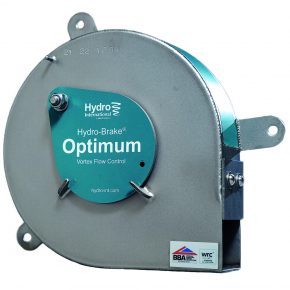
Getting on with SuDS
It is generally accepted that a sustainable approach to surface water drainage using SuDS must play a key role in responding to climate change and increasing urbanisation. The Government has acted with the Flood and Water Management Act 2010 which will effectively make SuDS mandatory, when eventually implemented, and will apply to any construction work that affects the ability of land to absorb rainwater. Projects of all types will have to comply, including any alterations that have drainage implications.
SuDS Approving Bodies (SABs) will have to be set up to approve and, where appropriate, adopt SuDS schemes. Importantly, the existing right to connect surface water drainage systems to public sewers (under Section 106 of the 1991 Water Industry Act) will be limited to those approved under the Act: in other words, only SuDS. Unfortunately, the new Act’s wide-ranging measures cannot be strictly applied until publication and implementation of the long-awaited National Standards for SuDS currently promised for next year.
Policy implementation now
Despite delays with National Standards, a growing number of planning authorities have pushed ahead and incorporated requirements for SuDS in local policies being implemented now. This stance is supported by The National Planning Policy Framework (NPPF), as well as previous national policies, such as PPS 25. SuDS also form an important part of the Code for Sustainable Homes and BREEAM 2011. In parallel, a growing number of authorities are already preparing to set up SABs to approve and adopt SuDS as soon as they can. At the same time, responsible designers are also embracing SuDS and integrating them into masterplans from the start as a key consideration, recognising amenity benefits and design opportunities, rather than perceiving them as problems.
From another perspective, recent planning Permitted Development rule changes aim to apply SuDS techniques to new or replacement paving around existing homes and various non-domestic buildings. For front drives, these measures took effect in October 2008 in England and apply from 30 September 2013 in Wales. For Scotland, similar measures apply to work initiated after 6 February 2012, related to paving of any size between the house and any street therefore, not just front gardens.
But it is not just domestic drives that are affected. Similar measures apply to existing industrial, warehouse, office and shop premises. In England, they took effect in April 2010 and in Scotland they are being considered now. Today, local authorities better understand the implications of rainwater run-off and take this issue seriously with more rigorous enforcement, rather than dismissing it as de minimis’. Increasingly, local residents and Parish Councils concerned about flooding are alerting Enforcement Officers about unauthorised, non-permeable paving in their areas. More guidance for local authorities and property professionals on these rules is available from Permitted Paving which can be downloaded from www.paving.org.uk
Slowing down and cleaning up
According to the draft National Standards, to comply with the Flood and Water Management Act 2010, a drainage system will need to be designed so that surface water run-off is managed at its source and on the surface. This approach will require a departure from some of the over-engineered, deep storage solutions seen on some recent schemes claiming to be SuDS. Here, concrete block permeable paving is ideally suited to treatment and storage near the surface and is set to play an important role in the future.
Where ground conditions preclude complete infiltration straight to the ground, SuDS play an essential role in slowing down and cleaning up run-off on site before discharge into conventional drainage systems or watercourses, so improving water quality and reducing downstream flood risks. In fact, concrete block permeable paving is particularly useful as a source control at the head of the SuDS management train.
It reduces peak rate, total volume and frequency of rainwater run-off, and is also particularly effective at removing water-borne pollution offering the important and often missed opportunity of a gradual supply of treated water that can be used for amenity. This is something that designers are increasingly exploiting for landscape design, water harvesting and habitat enhancement.
Without question, SuDS are already happening on the ground now and industry guidance is key to their success. Concrete block permeable paving is an important SuDS technology which has proven itself over decades of successful use in the UK and around the world. It has been championed by Interpave which offers the definitive guidance on all aspects notably in its Understanding Permeable Paving guide available from the Interpave information resource: www.paving.org.uk
Latest news

1st May 2024
Easy transportation with Makita’s DCU601 36V LXT
Power tool manufacturer Makita has added a new battery powered wheelbarrow to its extensive LXT outdoor power equipment range.
Posted in Articles, Building Industry News, Building Products & Structures, Garden, Hand Tools, Innovations & New Products, Plant, Equipment and Hire, Power Tools, Restoration & Refurbishment, Retrofit & Renovation, Site Preparation
1st May 2024
Hydro International incorporates future-proof design for Hydro-Brake® Optimum
Hydro International, an industry leader in water management products and services, is redefining the standard for hydraulic efficiency and adjustability.
Posted in Articles, Building Industry News, Building Products & Structures, Building Regulations & Accreditations, Building Services, Drainage, Drainage Services, Drainage, Guttering, Soffits & Fascias, Facility Management & Building Services, Information Technology, Innovations & New Products, Plumbing, Retrofit & Renovation, Sustainability & Energy Efficiency
30th April 2024
ASSA ABLOY Door Group strengthens offering with partnership
ASSA ABLOY Door Group is proud to announce a new internal restructure that sees the company joining forces with all comparable business units across Europe, the Middle East, India and Africa, to form a new global division – the ASSA ABLOY EMEIA Door Business Segment.
Posted in Access Control & Door Entry Systems, Architectural Ironmongery, Articles, Building Associations & Institutes, Building Industry News, Building Products & Structures, Building Services, Doors, Facility Management & Building Services, Restoration & Refurbishment, Retrofit & Renovation, Security and Fire Protection
30th April 2024
Geberit exhibiting at British Pig & Poultry Fair 2024
Bathroom and piping manufacturer Geberit will be exhibiting at the British Pig & Poultry Fair at NEC Birmingham (15 – 16 May 2024).
Posted in Articles, Building Industry Events, Building Industry News, Building Products & Structures, Building Services, Exhibitions and Conferences, Facility Management & Building Services, Innovations & New Products, Pipes, Pipes & Fittings, Plumbing, Retrofit & Renovation
 Sign up:
Sign up: